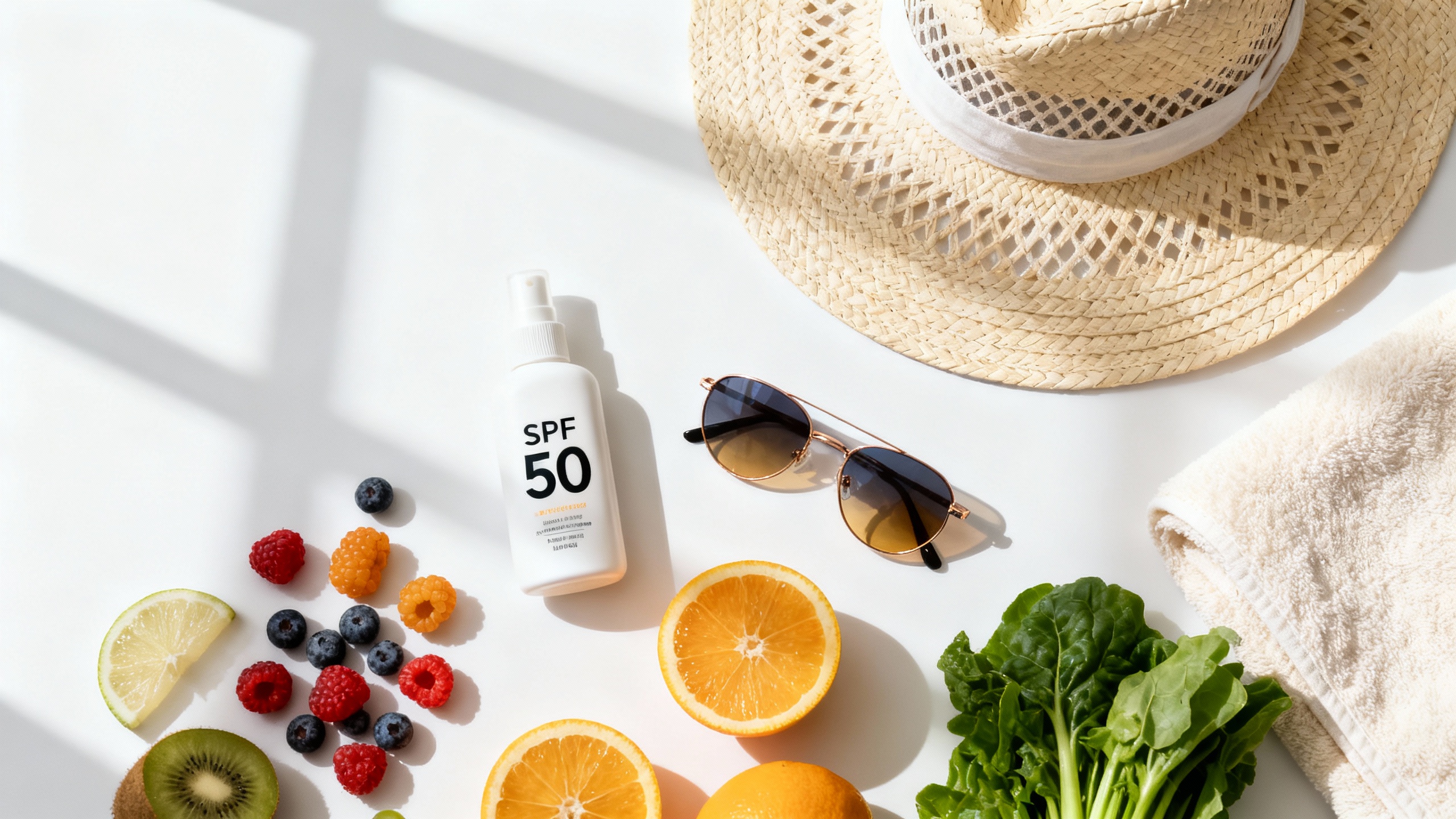Published 4 February 2025
Preventing Age Spots and Future Discoloration

Build an Everyday Protection Blueprint
The most effective strategy for coping with age spots is to prevent new pigment clusters before they surface. Within the Age-Related Skin Conditions category, prevention aligns with proactive dermatological care that shields melanocytes from UV stress, blue light, and pollution. The following steps keep your skin resilient so existing discoloration does not deepen and new lesions form less frequently.
View prevention as a lifestyle rather than a seasonal project. Consistency is what signals the skin to remain calm, evenly toned, and youthful.
Sun Defense Without Gaps
Daily Sunscreen Layers
Apply a broad-spectrum, SPF 30 or higher sunscreen every morning, including cloudy days. Choose formulas with iron oxides to also block visible light that contributes to hyperpigmentation. Reapply every two hours outdoors and after sweating or swimming.
Protective Clothing and Accessories
UPF-rated hats, long sleeves, and UV-filtering sunglasses add a physical barrier. Keep lightweight sun gloves in your car to shield hands while driving, a common site for stubborn age spots.
Smart Scheduling
Plan outdoor workouts for early mornings or late afternoons when UV index levels drop. Install UV window film at home and in the car to reduce incidental exposure during daily routines.
Supportive Skincare Ingredients
Antioxidants
Serums featuring vitamin C, ferulic acid, niacinamide, or resveratrol neutralize free radicals that trigger pigment production. Apply antioxidants beneath sunscreen to amplify protection.
Cell Turnover Boosters
Gentle retinoids and polyhydroxy acids encourage regular exfoliation, preventing melanin from clustering in the stratum corneum. Introduce them slowly—two nights per week—then build tolerance to nightly use.
Barrier-Reinforcing Moisturizers
Hydrated skin tolerates active ingredients better and shows less inflammation. Look for ceramides, squalane, and peptides to strengthen barrier function and reduce the risk of post-inflammatory hyperpigmentation.
Lifestyle Choices That Safeguard Tone
Diet Rich in Phytonutrients
Colorful produce supplies carotenoids and flavonoids that decrease oxidative stress. Combine leafy greens, berries, citrus, and omega-3 sources daily to nourish skin from within.
Stress and Sleep Management
Chronic stress raises cortisol, which disrupts melanocyte activity. Adopt calming rituals such as breathing exercises or short meditations and prioritize 7-9 hours of quality sleep for better skin recovery.
Avoiding Smoking and Excess Alcohol
Nicotine constricts blood vessels, starving skin of nutrients, while alcohol dries the complexion. Reducing both habits dramatically lowers inflammation that worsens discoloration.
Track and Adjust Over Time
Seasonal Reviews
Reevaluate your prevention strategy as weather shifts. You may need richer moisturizers in winter or higher water resistance during summer travel.
Dermatology Checkups
Annual professional skin exams ensure any suspicious spots are caught early. Bring a list of products you use so your provider can flag potential photosensitizing ingredients.
Data-Driven Motivation
Track UV index data alongside skincare notes in a journal or app. Seeing the correlation between diligent prevention and calmer skin keeps you accountable to long-term anti-aging goals.